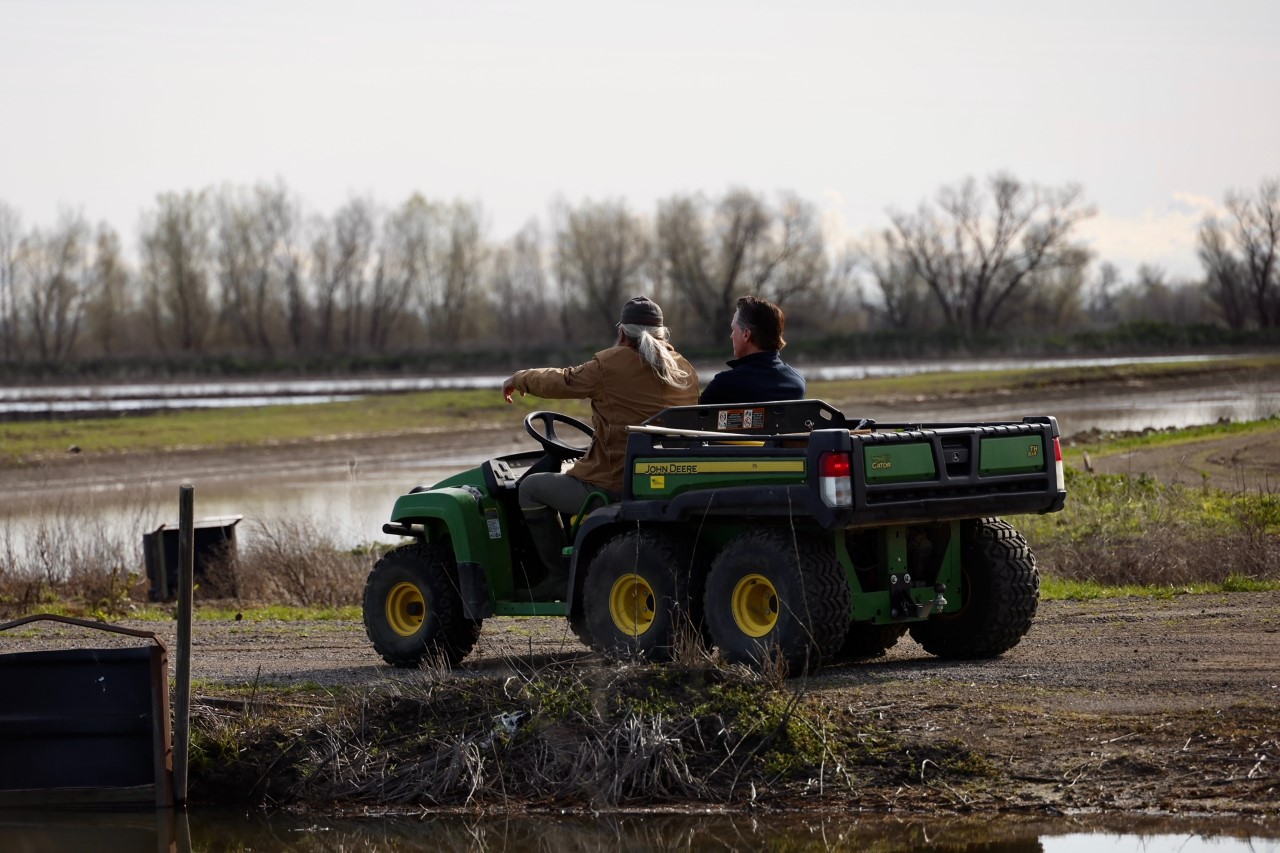WHAT TO KNOW: Climate change has made California’s dry and wet spells more extreme and unpredictable – after the three driest years on record, recent rain and snowfall have dramatically changed conditions in many parts of the state. The state has also advanced actions to boost storage and supply. Today’s action eases drought emergency provisions that are no longer needed while maintaining others to support impacted communities statewide. Harnessing water captured and stored from recent storms, the state also announced a major increase in expected State Water Project deliveries to local agencies – now an anticipated 75% allocation. YOLO COUNTY – Governor Gavin Newsom today rolled back some drought emergency provisions that are no longer needed due to current water conditions, while maintaining other measures that support regions and communities still facing water supply challenges, and that continue building up long-term water resilience. Amid climate-driven weather whiplash, the state has taken action to boost water supplies through groundwater recharge, stormwater capture, reservoir storage, and more. Today’s action comes as the state announced increased water deliveries to 29 public water agencies that serve 27 million Californians, now expecting to deliver 75% of requested water supplies – up from 35% announced in February, and the highest since 2017. While recent storms have helped ease drought impacts, regions and communities across the state continue to experience water supply shortages, especially communities that rely on groundwater supplies that have been severely depleted in recent years. Today’s order is responsive to current conditions while preserving smart water measures:
- Ends the voluntary 15% water conservation target, while continuing to encourage that Californians make conservation a way of life;
- Ends the requirement that local water agencies implement level 2 of their drought contingency plans;
- Maintains the ban on wasteful water uses, such as watering ornamental grass on commercial properties;
- Preserves all current emergency orders focused on groundwater supply, where the effects of the multi-year drought continue to be devastating;
- Maintains orders focused on specific watersheds that have not benefited as much from recent rains, including the Klamath River and Colorado River basins, which both remain in drought;
- Retains a state of emergency for all 58 counties to allow for drought response and recovery efforts to continue.
A copy of today’s executive order can be found here.
WHAT GOV. NEWSOM SAID: “We’re all in this together, and this state has taken extraordinary actions to get us to this point. The weather whiplash we’ve experienced in the past few months makes it crystal clear that Californians and our water system have to adapt to increasingly extreme swings between drought and flood. As we welcome this relief from the drought, we must remain focused on continuing our all-of-the-above approach to future-proofing California’s water supply.”



Since Governor Newsom announced the 15% voluntary conservation goal, Californians conserved 600,000 acre-feet of water – representing 1.2 million households’ yearly usage. The Governor today visited the Dunnigan Groundwater Recharge Project in Yolo County, where he highlighted the state’s work to accelerate and increase groundwater recharge to make the most of winter storms. California is working to expand groundwater recharge by at least 500,000 acre-feet in potential capacity as part of our water supply strategy. Leveraging the state’s long-term water supply strategy and more than $8.6 billion committed by Governor Newsom and the Legislature in the last two budget cycles to build water resilience, California is taking aggressive action to prepare for hotter and drier conditions driven by climate change that could reduce the state’s water supply by up to 10% by 2040. In the 2023-24 state budget, Governor Newsom is proposing an additional $202 million for flood protection and $125 million for drought-related actions. Here are other actions that Governor Newsom and the Legislature have taken to boost water supply, expand storage, and improve infrastructure:
- EXPANDING SUPPLY & STORAGE BY 1.1 MILLION ACRE-FEET: California has bolstered supply and storage through groundwater recharge and other projects, including a combined 1.1 million acre-feet of water – enough for 2.2 million households’ yearly usage.
- EXECUTIVE ORDERS TO CAPTURE & STORE MORE WATER: During recent storms, Governor Newsom signed executive orders to accelerate stormwater capture to boost groundwater recharge and other conservation measures.
- FAST-TRACKING GROUNDWATER RECHARGE: The state is expanding groundwater recharge by at least 500,000 acre-feet in potential capacity – streamlining permits and $1 billion for groundwater recharge projects for 88,000 more acre-feet per year.
- MAXIMIZING STORMWATER CAPTURE: $176 million for 67 stormwater projects and streamlining permitting to take advantage of major storm events.
- EXPANDING STORAGE ABOVE & BELOW GROUND: California is supporting seven locally-driven water storage projects that would expand the state’s capacity by 2.77 million acre-feet – about three times as much water as Folsom Lake can hold. And, California is working to expand San Luis Reservoir by 135,000 acre-feet to store more storm runoff.
- ADVANCING CLEAR, AMBITIOUS TARGETS: 142 actions to improve water resilience and bolster water supplies, and a roadmap for expanding urban stormwater capture capacity by 250,000 acre-feet and adding 4 million acre-feet of water storage capacity.
- MODERNIZING WATER INFRASTRUCTURE: California is working to modernize aging water conveyance systems across the state to safeguard long-term water reliability and help carry winter storm runoff into storage.
###
